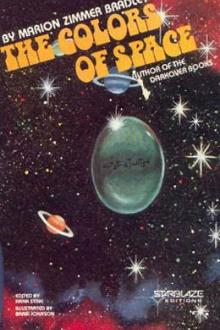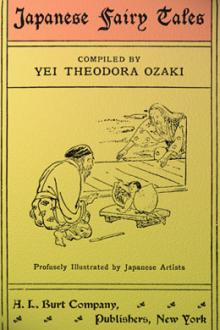Genre Other. Page - 346

the Lhari that way, yet they're as human as we are! Slaves of the Lhari!"
Bart felt the involuntary surge of anger, instantly controlled. "It's not that way at all. My mother was a Mentorian, remember. She made five cruises on a Lhari ship before she married my father."
Tommy sighed. "I guess I'm just jealous--to think the Mentorians can sign on the Lhari ship as crew, while you and I will never pilot a ship between the stars. What did she do?"
"She was a mathematician. Before the Lhari met up with men, they used a system of mathematics as clumsy as the old Roman numerals. You have to admire them, when you realize that they learned stellar navigation with their old system, though most ships use human math now. And of course, you know their eyes aren't like ours. Among other things, they're color-blind. They see everything in shades of black or white or gray.
"So they found out that humans aboard their ships were useful. You remember how humans, in the early days in space,

ren't made for human beings, and their size bothered us. Anyway, it was devilish heavy. We had to have the Americans down to get It out. They weren't anxious to go into the place, but of course the worst thing was safely inside the box. We told them it was a batch of ivory carving--archeological stuff; and after seeing the carved throne they probably believed us. It's a wonder they didn't suspect hidden treasure and demand a share. They must have told queer tales around Nome later on; though I doubt if they ever went back to those ruins, even for the ivory throne."
Rogers paused, felt around in his desk, and produced an envelope of good-sized photographic prints. Extracting one and laying it face down before him, he handed the rest to Jones. The set was certainly an odd one: ice-clad hills, dog sledges, men in furs, and vast tumbled ruins against a background of snow--ruins whose bizarre outlines and enormous stone blocks could hardly be accounted for. One flashlight view showed an incredible interior

at the earth on my diagram, and then at myself, and then, to clinch it, I pointed to myself and then to the earth itself shining bright green almost at the zenith.
"Tweel set up such an excited clacking that I was certain he understood. He jumped up and down, and suddenly he pointed at himself and then at the sky, and then at himself and at the sky again. He pointed at his middle and then at Arcturus, at his head and then at Spica, at his feet and then at half a dozen stars, while I just gaped at him. Then, all of a sudden, he gave a tremendous leap. Man, what a hop! He shot straight up into the starlight, seventy-five feet if an inch! I saw him silhouetted against the sky, saw him turn and come down at me head first, and land smack on his beak like a javelin! There he stuck square in the center of my sun-circle in the sand--a bull's eye!"
"Nuts!" observed the captain. "Plain nuts!"
"That's what I thought, too! I just stared at him open-mouthed while he pulled his head out of the sand an

secure society against oneof the most destructive but insidious institutions of popery; Americanfemales, an appeal to them of the most solemn kind, to beware ofConvents, and all who attempt to inveigle our unsuspecting daughtersinto them, by the secret apparatus of Jesuit schools. The author of thisbook was a small, slender, uneducated, and persecuted young woman, whosought refuge in our country without a protector; but she showed theresolution and boldness of a heroine, in confronting her powerfulenemies in their strong hold, and proved, by the simple force of truth,victorious in the violent conflicts which were waged against her by theRomish hierarchy of America and the popular press of the United States.
The publishers have thought the present an opportune period to placethis work again in the hands of American readers, with such information,in a preface, as is necessary to acquaint readers of the present daywith the leading circumstances attending and succeeding its originalpublication.

r description as they seemed toneed or as pleased me, and in one or two instances I have gatheredin an incident from another version. At all times, among my friends,both young and old, English or American, I have always found eagerlisteners to the beautiful legends and fairy tales of Japan, and intelling them I have also found that they were still unknown to thevast majority, and this has encouraged me to write them for thechildren of the West.
Y. T. O.
Tokio, 1908.
CONTENTS.
MY LORD BAG OF RICE
THE TONGUE-CUT SPARROW
THE STORY OF URASHIMA TARO, THE FISHER LAD
THE FARMER AND THE BADGER
THE "shinansha," OR THE SOUTH POINTING CARRIAGE
THE ADVENTURES OF KINTARO, THE GOLDEN BOY
THE STORY OF PRINCESS HASE
THE STORY OF THE MAN WHO DID NOT WISH TO DIE
THE BAMBOO-CUTTER AND THE MOON-CHILD
THE MIRROR OF MATSUYAMA
THE GOBLIN OF ADACHIGAHARA
THE SAGACIOUS MONKEY AND THE BOAR
THE HAPPY HUNTER AND THE SKILLFUL FISHER
THE STORY OF THE OLD MAN WHO MADE WITHERED

gh the subject consciously wishes to be hypnotized. Unconsciously, there may be a poor interrelationship with the hypnotist which can create an unfavorable climate for hypnosis. When this is the case, the subject doesn't respond until such time that he relates well to the hypnotist. Even the most calculated procedures will fail until a positive transference relationship is established. I am sure that you sometimes have said, "For some reason I don't like that person." If pressed for an answer, you'll usually reply, "I can't explain it, but I just have a feeling about him." Actually, your subconscious reactions are influencing your thinking and you "feel" a certain way. The same thing takes place in business transactions. You either like or dislike the proposition presented to you. You may say, "I have a certain feeling about this deal." You may not be conscious of the reasons, but your subconscious has reacted automatically because of previous experience along similar lines.
In giving you some insight

Bracing himself, Thomas stepped through the ward and onto the first step, and had to steady himself against the wall as the effect faded. He shook his head and started up the stairs.
The banister was carved with roses which swayed under a sorcerous breeze only they could sense. Thomas climbed slowly, looking for the next trap. When he stopped at the first landing, he could see that the top of the stairs opened into a long gallery, lit by dozens of candles in mirror-backed sconces. Red draperies framed mythological paintings and classical landscapes. At the far end was a door, guarded on either side by a man-sized statuary niche. One niche held an angel with flowing locks, wings, and a beatific smile. The other niche was empty.
Thomas climbed almost to the head of the stairs, looking up at the archway that was the entrance to the room. Something suspiciously like plaster dust drifted down from the carved bunting.
A tactical error, Thomas thought. Whatever was hiding

g More's lifetime. Its first publication in this country was in the English translation, made in Edward's VI.'s reign (1551) by Ralph Robinson. It was translated with more literary skill by Gilbert Burnet, in 1684, soon after he had conducted the defence of his friend Lord William Russell, attended his execution, vindicated his memory, and been spitefully deprived by James II. of his lectureship at St. Clement's. Burnet was drawn to the translation of "Utopia" by the same sense of unreason in high places that caused More to write the book. Burnet's is the translation given in this volume.
The name of the book has given an adjective to our language--we call an impracticable scheme Utopian. Yet, under the veil of a playful fiction, the talk is intensely earnest, and abounds in practical suggestion. It is the work of a scholarly and witty Englishman, who attacks in his own way the chief political and social evils of his time. Beginning with fact, More tells how he was sent into Flanders with Cuthbert Tuns

F A LETTER
The mechanical construction of a letter, whether social, friendly, or business, falls into six or seven parts. This arrangement has become established by the best custom. The divisions are as follows:
1. Heading 2. Inside address (Always used in business letters but omitted in social and friendly letters) 3. Salutation 4. Body 5. Complimentary close 6. Signature 7. Superscription
1. THE HEADING
The heading of a letter contains the street address, city, state, and the date. The examples below will illustrate:
2018 Calumet Street or 1429 Eighth Avenue Chicago, Ill. New York, N.Y. May 12, 1921 March 8, 1922
[Illustration: In the business letterhead appear the name of the firm, its address, and the kind of business engaged in]
When the heading is typewritten or written by hand, it is placed at the top of the first letter sheet close to the right-hand margin. It should begin about in the center, that is, it should extend no farther to the left than the ce
